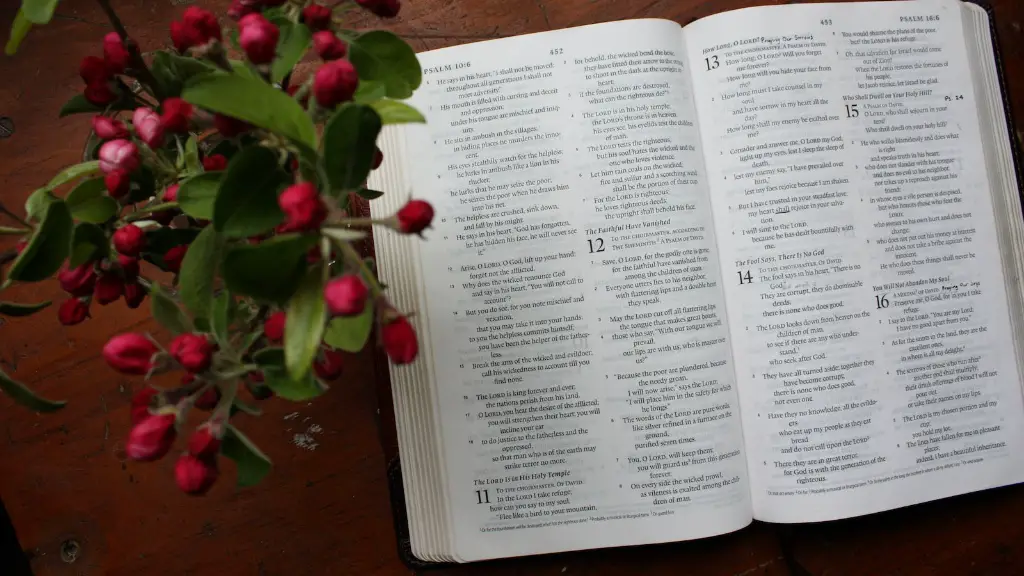The Historical Background of the Book of Lamentations
The Book of Lamentations is included in the Jewish Tanakh and the Christian Bible. It is an elegiac narration which is associated with sorrow and sorrowful events. It contains a series of poems and reflections written in the aftermath of the destruction of Jerusalem in 587 B.C. by the Babylonian king Nebuchadnezzar.
It paints a picture of misery, despair and grief of the people of Israel. But the main question that arises from this literary work is, who wrote it and what inspired him to create this work that is instantly associated with sorrow?
Who is Considered the Author of the Book of Lamentations?
The authorship of the Book of Lamentations has been long debated among scholars, and even though no definite answer can be given, there is an important part of the traditional interpretation of this book that helps shed light on the matter.
Starting from the 4th century A.D., Jewish scholar interpreted the passages attributed to the work of Jeremiah, a Jewish prophet who lived in the 6th century B.C. It is believed that after Jerusalem was destroyed, Jeremiah witnessed, and wrote down, the emotions of a deserted Jerusalem. The actual authorship may never be 100 percent known, but the attribution to Jeremiah is likely.
The accepted traditional belief is that Jeremiah is the author and that this is a natural consequence of his status as a prophet. It is possible that he could have used the structures of poems and his poetic abilities to compose what is now known as the Book of Lamentations.
The Content of the Book of Lamentations
The content of the book consists of five pieces of poetry composed with a rather repetitive and sustained rhythm. Its main themes include the pain of suffering and of a desolate city, the emptiness left behind by the Babylonian conquest, the sinful people of Jerusalem and their punishments, God’s mercy and forgiveness, and finally the promise of hope.
The Book of Lamentations is divided into five parts, each one addressing a different theme, and each one composed in a different style. The five comprise of Lamentations 1-2, 3, 4, 5 and 6, the last being an abridged version of the first two. The symmetry and formal proportions of the sections are very important because they express the view of a suffering people that is still able to see the mercy of their God.
The Structure of the Book of Lamentations
The book is strongly structural and points to the level of typical Hebrew poetry, as every section has its own form. Each one is written in a different prosodic meter, with its own pattern and with a different way of expressing the themes previously mentioned.
This is essential to allow the reader to experience the suffering of the people of Israel in a deeper level. The structure also allows an emotional connection between the author and the reader, and it is a way to deliver the main message of hope that completes the whole work.
The Post-Exilic Context of the Book of Lamentations
Behind the writing of this book there is an important historical context: the Babylonian conquest of Jerusalem and the exile of the Jews. After a long war, Nebuchadnezzar besieged Jerusalem and destroyed the Temple, and exile the people of Israel to Babylon, creating a deep wound in the collective psyche of the nation.
The aftermath of the invasion was a kind of collective depression, a state of deep sorrow and lamentation in the Jewish people. But, at the same time, the existence of these writings points to a sense of faith, an embedded idea in the Jewish psyche that God’s promises were still valid despite the suffering.
The Message of the Book of Lamentations
The Book of Lamentations is ultimately a message of hope, that even in the face of desolation and sorrow, God’s mercies are still there, always available. By attributing the authorship of this work to the prophet Jiangyiah, a traditional figure that stands in the midst of difficult times, the idea of hope survives even in the most difficult situations.
The message embedded in the literary structure of the book is a clear reference to the will of a people to overcome pain and go through trying situations with greater hope. The Book of Lamentations reminds us that sometimes the way to build a brighter future lies in reflecting on our past suffering.
The Impact of the Book of Lamentations
The impact of the Book of Lamentations has been long-lasting. Its influence cannot be understated, as not only the Jewish tradition has adopted it, but also the Christian and Islamic interpretations of the Sacred Scriptures. Its literary structure and its message of hope has become a beacon of strength for people in need, making it a timeless work of literature.
The Book of Lamentations is not just a historic and literary work but also a source of inspiration, a rallying cry in difficult times and a reminder that hope is never lost.
The Significance of the Book of Lamentations Today
Today, the Book of Lamentations can be seen as a source of spiritual and emotional guidance, a reminder that even in desperate moments there is hope. The beliefs expressed in this book can still give people a sense of comfort, an anchor in difficult and perplexing times.
The ideas exposed by this work have endured comparable suffering in other cultures and have maintained their relevance, providing guidance and comfort from ancient times to the present.
The Influence of the Book of Lamentations In Art
The symbolism associated with the Book of Lamentations has endured centuries, and it can be seen in several cultural manifestations such as literature, visual arts and music. In the Christian tradition, the sufferings and sorrows described in this book are a major theme in visual arts and music, especially in the Renaissance and Baroque periods.
Some of the most notable works of art associated with this book are sculptures, paintings and music based on the narrative and the emotions contained on its verses. These works often contained a message of hope, echoing the ideas and messages contained in the Book of Lamentations.
The Lessons Learnt From the Book of Lamentations
The Book of Lamentations can teach us about resilience and faith, the power of literature and art, and the endurance of ideas that, even in the deepest suffering, never truly die.
It can provide a model of how we can cope with despair and sorrow, and an example of how to draw hope from difficulty. In the end, the Book of Lamentations is a reminder of the strength of people, and of the human capacity to overcome pain and suffering.





